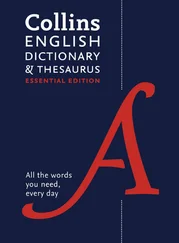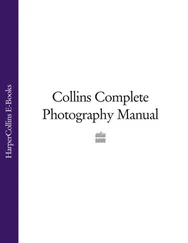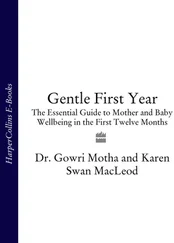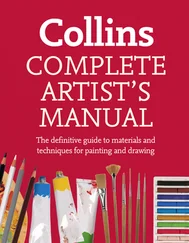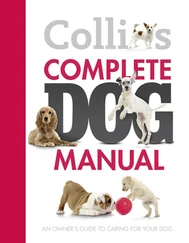Rectangular Simple rectangular bag typically without a hood. These are the roomiest bags but also are heavier since they are just as wide at the feet as they are at the shoulders.
Semi-rectangular This bag is rectangular at the top without a hood and it tapers somewhat to the feet. It is not as warm as a mummy bag but provides more room, and weighs less than a comparable rectangular bag.
Specific Features to Look for
A hood allows you to insulate your head to prevent heat loss in cold weather. If this is a summer weather bag, a hood may not be necessary.
The draft tube is an insulated tube that runs along the zipper line and prevents cold spots at the zipper.
A draft collar provides a closure at the neck area to reduce the bellows action of heat leaving the bag. Good for cold-weather bags.
Well-designed zippers allow you to open and close your bag easily from the inside and allow some level of ventilation.
Sleeping Bag Fit
Fit is as important in a sleeping bag as it is in clothing. In sleeping bags, you want the bag to snugly conform to your body. If the bag is too big, you will have large spaces for convection currents and you’ll be cold. You might even need to wear extra clothing layers to help fill up the space. If the bag is too tight, the insulation may actually be compressed, decreasing its effectiveness. How comfortable you feel in the bag can also affect your night’s sleep—some people feel confined in a snug sleeping bag and need more “wiggle room” than others.
Insulation Types
When we talk about how warm a sleeping bag is, we mean the loft of the bag. Loft is the amount of dead air space created by the fill used in the sleeping bag. There are a variety of fills for sleeping bags, but they break down into two categories: synthetic fibers and down (see pagesfor details).
Sleeping Bag Care
Keep in mind that sleeping bags age. Over years of use, the fibers that create the loft in the bag break down and dead air space diminishes even though the bag stills weighs the same. This means that the bag is no longer capable of keeping you warm at its original temperature rating. Here are a few things you can do to prolong the life of your bag:
Stuff your sleeping bag into its stuff sack rather than rolling it. Rolling compresses and ultimately breaks the fibers in the same direction, decreasing loft faster. Stuffing is a random pattern of compression that helps your loft last longer.
Don’t keep your sleeping bag in its stuff sack between trips. Keep the bag unstuffed in a large breathable bag like a laundry bag.
Follow the manufacturer’s instructions for washing your bag and wash the bag only when necessary (repeated washings tend to reduce the loft of the bag).
Sleeping Bag Extras
Here are a number of sleeping bag extras that can be useful on your trip:
Sleeping Bag Liner Sleeping bag liners can serve as a lightweight cover for sleeping on top of your bag in hot weather. Tightly woven fabrics like silk can even work as mosquito netting. In cooler weather, a lightweight liner of Thermolite weighs only a few ounces and can add 10° to 15°F (8° to 9°C) of warmth to the rating of your bag. For long-distance hikers, you can mail the liner home when you no longer need it. Liners also can help keep the inside of your bag clean, reducing the number of times the bag needs to be washed.
Vapor Barrier Liner A vapor barrier liner can add about 10°F (9°C) to the rating of your bag by reducing evaporative heat loss. You may feel a little moist inside, so wear polypropylene or other hydrophobic wicking layers against your skin.
Bivouac (Bivy) Sack This waterproof outer shell can add 10° to 15°F (8° to 9°C) to the rating of your bag.
Overbag This is actually another lightweight rectangular sleeping bag cut to fit over a regular bag. Depending on the amount of insulation, an overbag can add 10° to 25°F (8° to 11°C) to the rating of your bag. A properly matched sleeping bag/overbag system can be a great combination. The overbag alone can be used for a summerweight bag. The sleeping bag alone can be used for fall and spring, and the combined bags can be used for cold weather (but may not be warm enough for a full winter trip).

TRICKS OF THE TRAIL
Sleeping WarmYour sleeping bag will be whatever the ambient air temperature is. Here are some tricks for warming things up before you crawl into your bag to sleep:
After dinner, fill a water bottle with hot water. Put the hot bottle inside your bag before you get in to preheat the bag. The water should stay warm all night. (Make sure you have a bottle that seals tightly.)
Get in your bag and do a bunch of sit-ups. The surge of body heat will warm you and the bag.
Change into dry clothing (like polypropylene) before getting into your bag.
Wear extra clothing, if necessary. How much clothing to wear in your bag depends on how much extra space there is around your body in the bag, whether you are adequately hydrated, and whether you sleep “warm” or “cold.” If there is space, wear extra layers to increase the dead air space around your body. Remember, you will need to warm up all your layers as well as the bag.
Head out or head in? Some people like to pull the hood drawcords so tight that only their nose is sticking out. This makes me feel a little claustrophobic, so I’m a head-outer. But that makes me colder, so I bring a good fleece hat. When bugs are about, I use a mosquito head net.
SLEEPING PADS
Sleeping pads serve two functions: comfort, cushioning your body from rocky ground; and more important, insulation. In cold conditions, a sleeping pad is essential to maintain your body heat by preventing conductive heat loss to the colder ground. Sleeping pads come in two basic types: closed-cell foam such as Ensolite or inflatable pads such as Therm-A-Rest pads. Closed-cell foam pads are lightweight and roll up to a small diameter. They tend to get a little stiff in cold weather. Inflatable pads are typically open-cell foam covered with coated nylon and have an inflation valve at one end. Some people feel that inflatables are more comfortable, although they tend to be a little slippery—tough if your tent is pitched on a slope. With inflatable pads you should carry repair items (good old duct tape) to patch any holes that develop in the nylon outer layer. A leaky inflatable is almost useless.
For three-season camping, a pad that is 3/ 8inch thick (10 millimeters) is adequate. In colder conditions, you should have 1/ 2inch (12 millimeters) of insulation between you and the ground. Pads are available in either full length or partial length (three-fourths or two-thirds). You can save weight by not using a full-length pad. Full-length pads are essential only in very cold environments, so that no part of your sleeping bag is in contact with the cold ground.
 GOING ULTRALIGHT – SLEEPING BAGS AND PADS
GOING ULTRALIGHT – SLEEPING BAGS AND PADS
You can cut down on sleeping bag weight in a couple ways: fill and features. Going with a “superlight” synthetic fill or a down bag will decrease the weight for a particular temperature range of bag. For warm weather camping you don’t need features like draft tubes that add weight. You can get 40°F (4°C) sleeping bags that weigh 2 pounds (4.4 kilograms) or less.
While I like the comfort of an inflatable pad, and there are ones that are very light, I think a foam pad is actually a better choice in an ultralight setting. Foam pads have many more uses than just insulating your body from the ground. If you are carrying a frameless rucksack, your rolled foam pad can create the “frame” for additional support. In first-aid situations, they can be cut up for splints; you can pad your blistered heels with them; insulate pots from the cold ground; and on and on.
Читать дальше
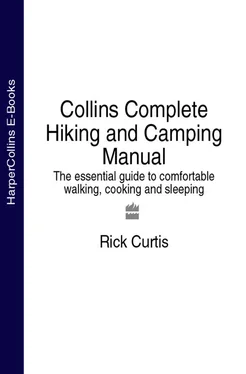

 GOING ULTRALIGHT – SLEEPING BAGS AND PADS
GOING ULTRALIGHT – SLEEPING BAGS AND PADS

